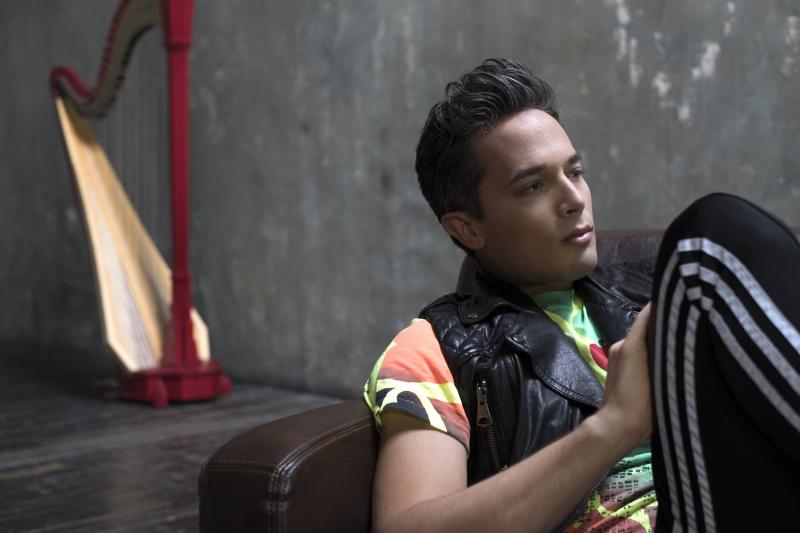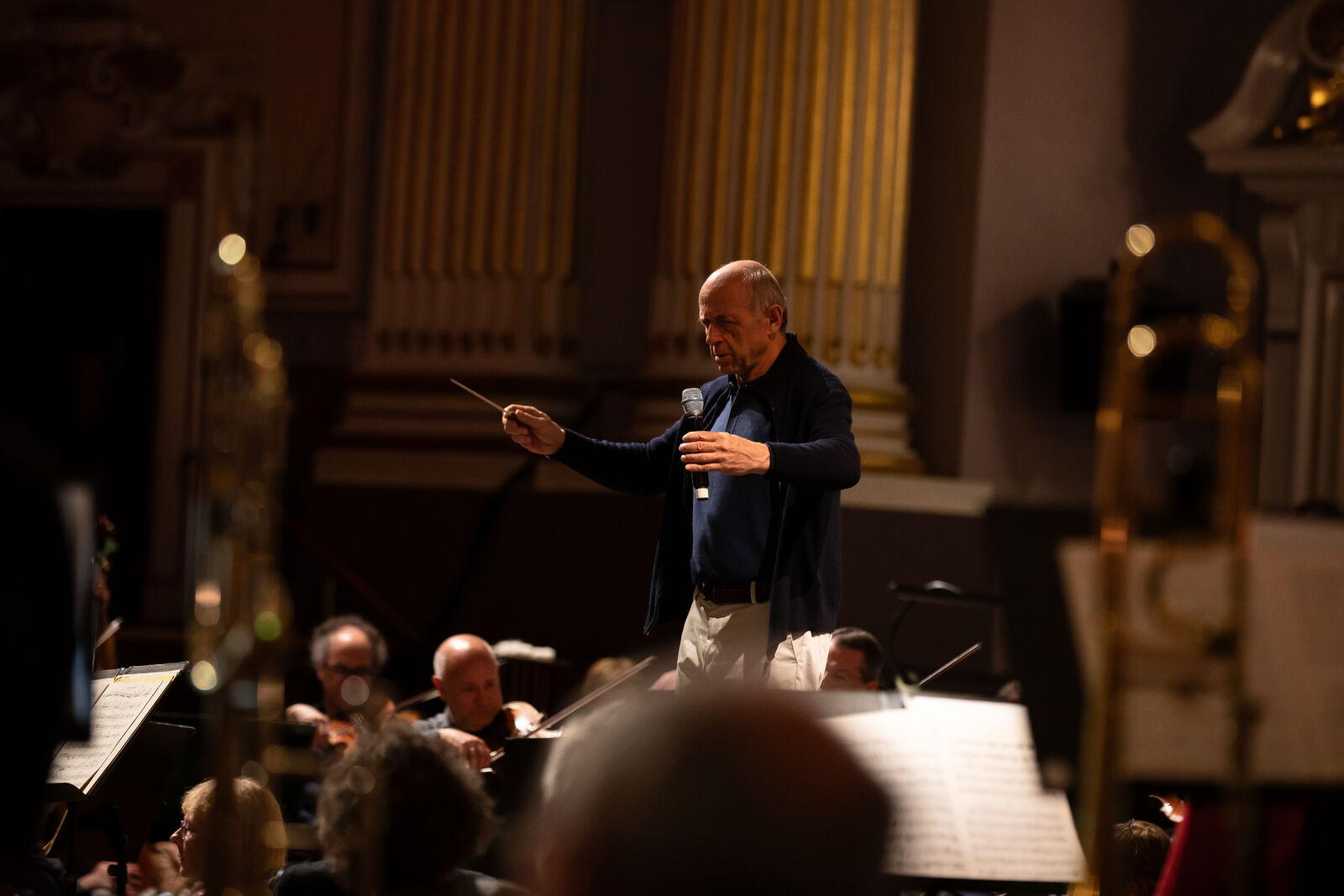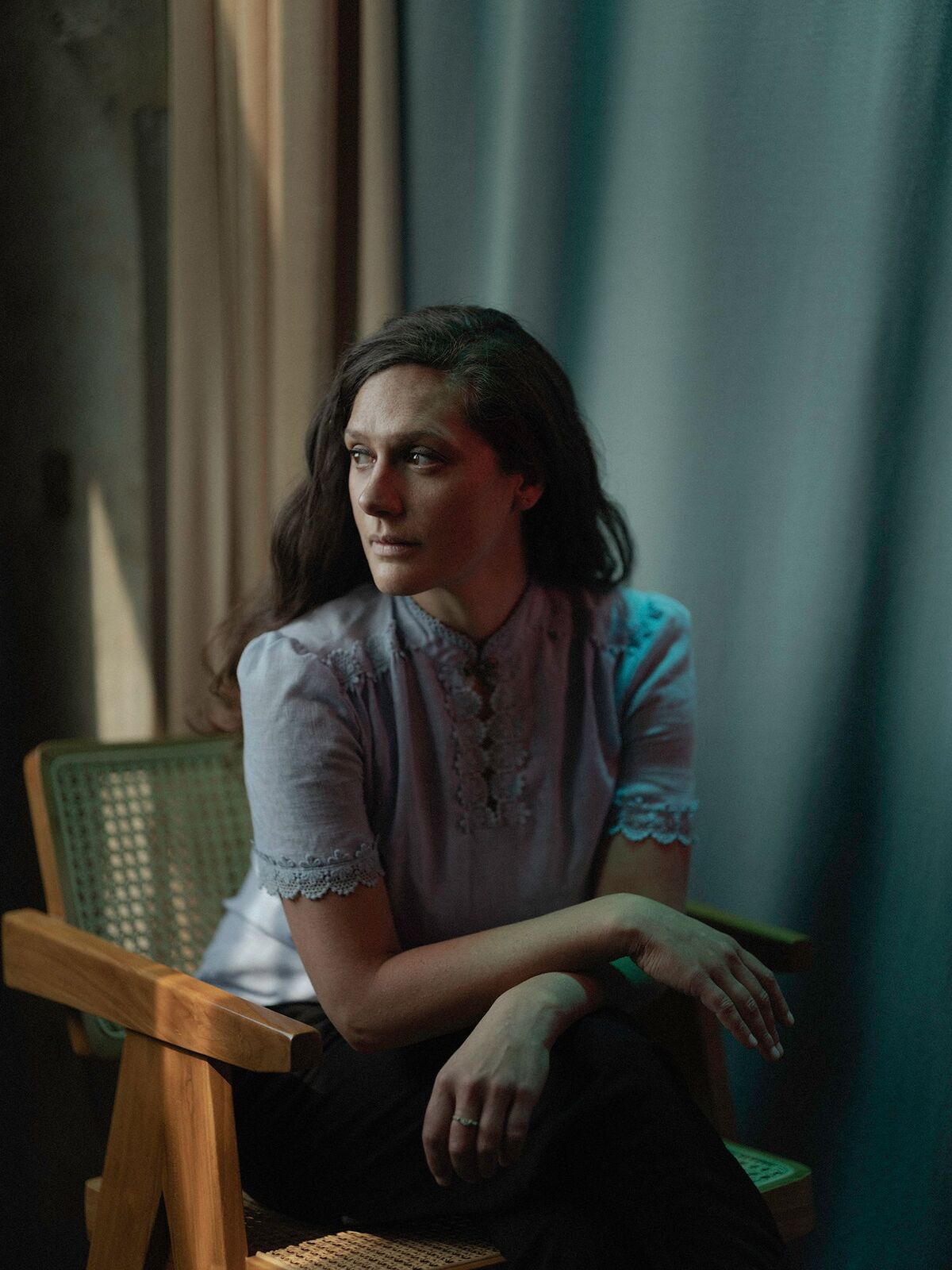Schiff, Budapest Festival Orchestra, Fischer / Emmanuel Ceysson & Friends, Edinburgh International Festival 2023 review - Hungariana and harp | reviews, news & interviews
Schiff, Budapest Festival Orchestra, Fischer / Emmanuel Ceysson & Friends, Edinburgh International Festival 2023 review - Hungariana and harp
Schiff, Budapest Festival Orchestra, Fischer / Emmanuel Ceysson & Friends, Edinburgh International Festival 2023 review - Hungariana and harp
Magyar magic in the Usher Hall, intimate theatricality in the Queen's Hall

You’d feel short-changed if an orchestra like the Budapest Festival Orchestra came to the Edinburgh Festival and didn’t play some Hungarian music, so why not put together a whole concert of the stuff?
And, oh, how naturally they play them! They were joined for Bartók’s Third Piano Concerto – the only component of the programme travelling to the Proms at the weekend – by that prince among Hungarian pianists, Sir András Schiff, and Schiff didn’t so much play the piano as stroke it, so elegantly did he bring the solo line to life. This was playing of the most mellifluous poetry throughout, even in the chunky octave passages, while in sections of the slow movement he seemed to be competing with the orchestral strings as to who could play the most softly.
But the real star of the sound picture was the orchestra. That opening string shimmer was so delectably precise that every note felt individually articulated, and they crafted the slow movement as a gorgeous, soft-focused Nocturne of half-remembered beauty. Fischer conducted the whole concerto in one continuous sweep without a break, making it sound as though it was unfolding spontaneously, and both he and Schiff were in their element in the finale which, in its central section, sounded like Bach refracted through a New York jazz bar.  The concert began with Bartók’s 1915 orchestration of his Romanian Folk Dances. Fischer is never one to take the easy option if he can do something extra-creative instead, so he preceded the orchestral version with the original dances played by three of the BFO string musicians. They made it sound like a piece of spontaneous fun, and it helped to reveal how great was the cloak of refinement that Bartók managed to cast over the music in its orchestral form. Spontaneous isn’t the word you’d choose for his Seven Choruses for Female Voice, at least not as performed by the girls of the National Youth Choir of Scotland. Their intonation was perfect and their tone airily beautiful, though their elegant refinement was quite a contrast to the raw energy of the dances.
The concert began with Bartók’s 1915 orchestration of his Romanian Folk Dances. Fischer is never one to take the easy option if he can do something extra-creative instead, so he preceded the orchestral version with the original dances played by three of the BFO string musicians. They made it sound like a piece of spontaneous fun, and it helped to reveal how great was the cloak of refinement that Bartók managed to cast over the music in its orchestral form. Spontaneous isn’t the word you’d choose for his Seven Choruses for Female Voice, at least not as performed by the girls of the National Youth Choir of Scotland. Their intonation was perfect and their tone airily beautiful, though their elegant refinement was quite a contrast to the raw energy of the dances.
Still, it was dances of a different kind to bring the programme to a rollicking close, Kodály’s Dances of Galánta, another BFO speciality. As played here it sounded like a concerto for orchestra, the spotlight falling on each section in turn with dazzling results. The winds played their lines as though with one eye permanently raised, while the strings surged through their lines, with the violins creating a terrific skirl to their main themes. Fischer conducted with a terrific kick of vim, making the whole piece sound like the soundtrack to a village party. I wonder how these musicians would take to Scottish ceilidh music?...
Somewhere there must be rule that says it’s impossible to do a concert of harp music without featuring both Debussy’s Danse sacrée et danse profane and Ravel’s Introduction and Allegro, both of which were products of the “Harp Wars” between manufacturers Pleyel and Érard in the first decade of the 20th century. Alongside the fact that they’re both great music, the historical backdrop gives their pairing an extra kick of competition. However, it’s a testament to the quality of the programming from harpist Emmanuel Ceysson that the rest of his Queen’s Hall concert at the Edinburgh International Festival was, if anything, even more attention grabbing (★★★★★). In fact it carried a range of colours and dynamics that, until that morning, I’d scarcely have thought possible from the harp.
 That’s because Ceysson plans his programmes with the same touch of theatricality that he gives to his playing. When the audience entered for the first half of his concert, the Queen’s Hall’s curtains were closed and the hall put into artificial darkness (it was 11am!). Ceysson appeared dressed all in black with some red sparkle on his shoes. Why? Because, he explained, his first three pieces were all about the macabre and fantastical. Two pieces, in fact, were inspired by the dark tales of Edgar Allan Poe, and the third by one of the darkest Greek myths.
That’s because Ceysson plans his programmes with the same touch of theatricality that he gives to his playing. When the audience entered for the first half of his concert, the Queen’s Hall’s curtains were closed and the hall put into artificial darkness (it was 11am!). Ceysson appeared dressed all in black with some red sparkle on his shoes. Why? Because, he explained, his first three pieces were all about the macabre and fantastical. Two pieces, in fact, were inspired by the dark tales of Edgar Allan Poe, and the third by one of the darkest Greek myths.
Henriette Renié’s Ballade Fantastique for solo harp is based on Poe’s Tell-Tale Heart, and Ceysson’s playing combined its ravishing lyricism and sweeping melodies with the tick-tock rhythm of nervous energy that increased the dramatic intensity as the piece developed. In André Caplet’s The Masque of the Red Death, death, in the person of Ceysson’s harp, stalked the string quartet that accompanied him on stage. This bespoke group (Raki Singh - pictured above by Phil Singh - and Donald Grant on violins, Ruth Gibson on viola, Christian Elliott on cello) played with gorgeous subtlety, be it in the whirl of the dance or the expressionistic writing of the plague scenes, its shades of horror managing to keep the tension even when Elliott’s cello bow broke in mid-phrase. In Marius Constant’s Harpalycé, Ceysson conjured up a disturbing range or dark, oppressive sounds that seemed to be the very opposite of the angelic brightness most listeners associate with the harp. Shuddering overtones and eerie microtone glissandi, achieved with the aid of what looked like a screwdriver, created such a creepy range of effects that it had me longing for the fresh air of the interval.
And yes, they opened the curtains for the second half so that light flooded in for the Debussy and Ravel. More superstitious types might even say that it affected the music too, with gorgeously suave string playing for the Debussy and terrific sparkle in the Ravel, the fluid, airborne beauty borne up still further with the addition of Maximiliano Martín’s clarinet and Charlotte Ashton’s flute. This was a dramatic as well as a musical masterclass, with first-rate playing and a cracking sense of atmosphere.
Explore topics
Share this article
more Classical music
 Classical CDs: Swans, hamlets and bossa nova
A promising young pianist's debut disc, plus Finnish mythology and a trio of neglected British composers
Classical CDs: Swans, hamlets and bossa nova
A promising young pianist's debut disc, plus Finnish mythology and a trio of neglected British composers
 Christian Pierre La Marca, Yaman Okur, St Martin-in-The-Fields review - engagingly subversive pairing falls short
A collaboration between a cellist and a breakdancer doesn't achieve lift off
Christian Pierre La Marca, Yaman Okur, St Martin-in-The-Fields review - engagingly subversive pairing falls short
A collaboration between a cellist and a breakdancer doesn't achieve lift off
 Ridout, Włoszczowska, Crawford, Lai, Posner, Wigmore Hall review - electrifying teamwork
High-voltage Mozart and Schoenberg, blended Brahms, in a fascinating programme
Ridout, Włoszczowska, Crawford, Lai, Posner, Wigmore Hall review - electrifying teamwork
High-voltage Mozart and Schoenberg, blended Brahms, in a fascinating programme
 Sabine Devieilhe, Mathieu Pordoy, Wigmore Hall review - enchantment in Mozart and Strauss
Leading French soprano shines beyond diva excess
Sabine Devieilhe, Mathieu Pordoy, Wigmore Hall review - enchantment in Mozart and Strauss
Leading French soprano shines beyond diva excess
 Špaček, BBC Philharmonic, Bihlmaier, Bridgewater Hall, Manchester review - three flavours of Vienna
Close attention, careful balancing, flowing phrasing and clear contrast
Špaček, BBC Philharmonic, Bihlmaier, Bridgewater Hall, Manchester review - three flavours of Vienna
Close attention, careful balancing, flowing phrasing and clear contrast
 Watts, BBC Symphony Orchestra and Chorus, Bignamini, Barbican review - blazing French masterpieces
Poulenc’s Gloria and Berlioz’s 'Symphonie fantastique' on fire
Watts, BBC Symphony Orchestra and Chorus, Bignamini, Barbican review - blazing French masterpieces
Poulenc’s Gloria and Berlioz’s 'Symphonie fantastique' on fire
 Bell, Perahia, ASMF Chamber Ensemble, Wigmore Hall review - joy in teamwork
A great pianist re-emerges in Schumann, but Beamish and Mendelssohn take the palm
Bell, Perahia, ASMF Chamber Ensemble, Wigmore Hall review - joy in teamwork
A great pianist re-emerges in Schumann, but Beamish and Mendelssohn take the palm
 First Persons: composers Colin Alexander and Héloïse Werner on fantasy in guided improvisation
On five new works allowing an element of freedom in the performance
First Persons: composers Colin Alexander and Héloïse Werner on fantasy in guided improvisation
On five new works allowing an element of freedom in the performance
 First Person: Leeds Lieder Festival director and pianist Joseph Middleton on a beloved organisation back from the brink
Arts Council funding restored after the blow of 2023, new paths are being forged
First Person: Leeds Lieder Festival director and pianist Joseph Middleton on a beloved organisation back from the brink
Arts Council funding restored after the blow of 2023, new paths are being forged
 Classical CDs: Nymphs, magots and buckgoats
Epic symphonies, popular music from 17th century London and an engrossing tribute to a great Spanish pianist
Classical CDs: Nymphs, magots and buckgoats
Epic symphonies, popular music from 17th century London and an engrossing tribute to a great Spanish pianist
 Sheku Kanneh-Mason, Philharmonia Chorus, RPO, Petrenko, RFH review - poetic cello, blazing chorus
Atmospheric Elgar and Weinberg, but Rachmaninov's 'The Bells' takes the palm
Sheku Kanneh-Mason, Philharmonia Chorus, RPO, Petrenko, RFH review - poetic cello, blazing chorus
Atmospheric Elgar and Weinberg, but Rachmaninov's 'The Bells' takes the palm
 Daphnis et Chloé, Tenebrae, LSO, Pappano, Barbican review - lighting up Ravel’s ‘choreographic symphony’
All details outstanding in the lavish canvas of a giant masterpiece
Daphnis et Chloé, Tenebrae, LSO, Pappano, Barbican review - lighting up Ravel’s ‘choreographic symphony’
All details outstanding in the lavish canvas of a giant masterpiece

Add comment